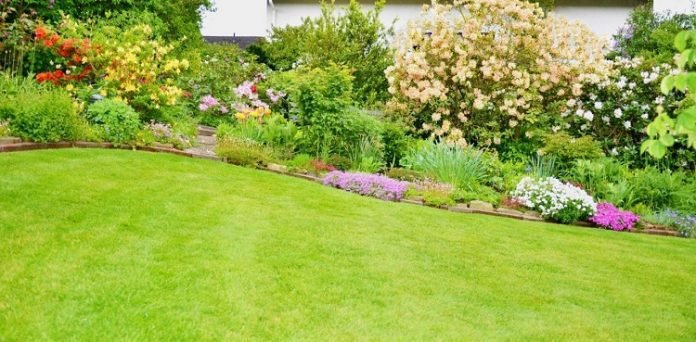Last Updated on May 28, 2025 by Rida Hamid
Did you know that landscaping can increase your property value? Depending on what you do, it can increase it by up to 15%.
And that’s just one benefit of maintaining a healthy lawn. It’ll also improve the air quality, flood control, and prevent soil erosion.
Are you thinking of doing some lawn work? Want to up your residential landscape maintenance game? If so, you’re at the right place.
We’ll be sharing a few tips for landscape maintenance below. Read on!
Table of Contents
1. Mow the Grass Regularly
Mowing the lawn will not only keep the grass healthy, but it’ll also help eliminate pests. How often should you do it? Once a week (during the growing season).
You don’t want to cut the grass too short, though—that’ll deplete its energy reserves, which will weaken or kill the blades. Rather, you want to leave them at around 2 1/2 to 3 inches.
And make sure that the mower blade is sharp when you’re doing it. Dull blades will tear up the grass, causing ragged edges. Not only that but it can also make them more susceptible to disease. If necessary, hire a professional lawn mowing service.
2. Aerate the Lawn
Lawn aeration involves puncturing the soil with small holes; these spaces will allow water, air, and nutrients to penetrate the grassroots, which will stimulate healthy blade growth.
There are two main types of aerators that you can use—spike aerators (rollers with solid spikes to penetrate the soil) and plug aerators (tools that use rows of hollow tines to remove plugs of soil). The former is suitable for small lawns with mild compaction while the latter is ideal for hard, compacted soil.
For the best results, aerate the lawn during the growing season in early autumn or early summer, when the grass is growing most actively.
3. Remove Weeds and Moss
Weeds can prevent grass growth by blocking nutrients and air from getting to the roots—that’s why it’s best to remove them from your lawn.
Using your hands, pull out the entire plant, including the root—that’ll prevent it from growing back. If you accidentally snap the roots off, gently pry the rest of the plant out of the ground using a fork.
Similarly, you also want to remove mosses from your lawn. You can do this by using a spring-tine rake. The key is to rake at the moss from different angles, which will help loosen and lift it from the ground. Once it’s out, you can toss it into the trash or compost bin.
Put These Residential Landscape Maintenance Tips to Use
And there you have it—a guide to residential landscape maintenance. As you can see, there are several things that you can do to keep your lawn in tip-top condition. For those who need some help, consider hiring a professional.
Did you find this guide helpful? For more content like this, check out some of the other posts in our home improvement category!



























